A Study on Coexistence Capability Evaluations of the Enhanced Channel Hopping Mechanism in WBANs
Abstract
:1. Introduction
- An enhanced channel hopping mechanism is proposed. We extend the channel hopping techniques to be more general and multiple WBANs are allowed to be allocated to the same channel. With limited coexistence capacity extension, coexistence capability is substantially improved.
- A comprehensive coexistence capability analysis construction is provided. The conflict possibility of coexisting WBANs is described by a risk parameter and the coexistence behavior is modeled as a birth-and-death process. Both queuing and non-queuing behaviors are taken into account in our analysis.
- Two approximate methods are illustrated to estimate the coexistence capability of the enhanced channel hopping mechanism. Numerous simulation comparisons are implemented to evaluate the availability and precision of our methods.
2. Related Works
2.1. Coexistence Technologies Overview
2.1.1. IEEE 802.15.6 Coexistence Strategies
2.1.2. Other Channel-Shared Coexistence Technologies
2.2. Channel Hopping Enhancement Opportunities
3. Models Assumption and Problem Statement
3.1. Models Assumption
3.1.1. Coexistence Structures and Coexistence Capacity
3.1.2. Channel Hopping Regulation
3.1.3. Stochastic Process Distribution and Queuing Model
3.2. Problem Statement
4. Mechanism Description and Analysis Construction
4.1. Enhanced Channel Hopping Mechanism
| Algorithm 1 Joining process of enhanced channel hopping mechanism |
| Input: Interfering WBAN channel index ι, coexistence capacity m, number of channels n, occupied channels map and the channel hopping sequence generation Output: occupied channels map
|
4.2. Analysis Construction of Coexistence Capability
5. Coexistence Capability Estimation
5.1. Under 1-Tolerated Channel Conflict Model
5.1.1. Basic Property and Theorems
5.1.2. Service-Dependent Analysis Model
5.1.3. Service-Independent Analysis Model
5.2. Under m-Tolerated Channel Conflict Model
5.2.1. Approximate Method Based on Uniform Distribution Assumption
5.2.2. Approximate Method Based on Additive Property of Possion-Stream
6. Simulation Results and Discussion
6.1. Coexistence Capability Parameters Discussion
6.1.1. 1-Tolerated Channel Conflict Model
6.1.2. m-Tolerated Channel Conflict Model
6.2. Coexistence Capability Metrics Discussion
6.3. Coexistence Performance Discussion
7. Conclusions
Acknowledgments
Author Contributions
Conflicts of Interest
Appendix A.
Appendix A.1. Abbreviations Table
| Abbreviations | Nomenclature | Abbreviations | Nomenclature |
|---|---|---|---|
| ACK | Acknowledgement | LFSR | Linear Feedback Shift Register |
| BDR | Beacon Delivery Ratio | MAC | Medium Access Control |
| CC | Coexistence Capacity | MBAA | Multiple-Beam Adaptive Array |
| CCA | Clear Channel Assessment | NB | Narrow Band |
| CSMA | Carrier Sense Multiple Access | PDR | Packet Drop Rate |
| D | Dynamic | PHY | Physical Layer |
| ECG | Electroardiograph | S | Static |
| EEG | Electroencephalogram | SD | Semi-dynamic |
| EMG | Electromyography | SIR | Signal to Interference Ratio |
| GPS | Global Position System | TDMA | Time Division Multiple Address |
| HBC | Human Body Channel | UWB | Ultra Wide Band |
| ISM | Industrial, Scientific and Medical | WBANs | Wireless Body Area Networks |
| LBT | Listen Before Talk |
Appendix A.2. Symbols Table
| Article | Symbol | Article | Symbol |
|---|---|---|---|
| backoff delay threshold | coexistence capacity | m | |
| occupied channel statistics vector | the number of WBANs in i-th channel | ||
| interfering WBAN channel index | ι | channel hopping sequence generator | G(ι,m, ) |
| coexisting state space | S | maximum index of coexisting state | N |
| coexisting-WBAN parameter | X | busy-channel parameter | Y |
| arriving rate | λ | serving rate | μ |
| the i-th state probability | Coexisting Risk | R | |
| Risk Variance | D | Channel Utilization | U |
| i-channel busy rate | average number of busy channels | ||
| the probability of k busy channels | saturation rate | ||
| expected value of queue length | L | Interfering Period | |
| consumer residence time |
References
- Movassaghi, S.; Abolhasan, M.; Lipman, J.; Smith, D.; Jamalipour, A. Wireless body area networks: A survey. IEEE Commun. Surv. Tutor. 2014, 16, 1658–1686. [Google Scholar] [CrossRef]
- Cavallari, R.; Martelli, F.; Rosini, R.; Buratti, C.; Verdone, R. A survey on wireless body area networks: Technologies and design challenges. IEEE Commun. Surv. Tutor. 2014, 16, 1635–1657. [Google Scholar] [CrossRef]
- Alam, M.M.; Hamida, E.B. Surveying wearable human assistive technology for life and safety critical applications: Standards, challenges and opportunities. Sensors 2014, 14, 9153–9209. [Google Scholar] [CrossRef] [PubMed]
- Latré, B.; Braem, B.; Moerman, I.; Blondia, C.; Demeester, P. A survey on wireless body area networks. Wirel. Netw. 2011, 17, 1–18. [Google Scholar] [CrossRef]
- Fortino, G.; Giannantonio, R.; Gravina, R.; Kuryloski, P.; Jafari, R. Enabling effective programming and flexible management of efficient body sensor network applications. IEEE Trans. Hum. Mach. Syst. 2013, 43, 115–133. [Google Scholar] [CrossRef]
- Le, T.T.; Moh, S. Interference Mitigation Schemes for Wireless Body Area Sensor Networks: A Comparative Survey. Sensors 2015, 15, 13805–13838. [Google Scholar] [CrossRef] [PubMed]
- De Silva, B.; Natarajan, A.; Motani, M. Inter-user interference in body sensor networks: Preliminary investigation and an infrastructure-based solution. In Proceedings of the IEEE 2009 Sixth International Workshop on Wearable and Implantable Body Sensor Networks, Berkeley, CA, USA, 3–5 June 2009; pp. 35–40.
- Lai, X.; Liu, Q.; Wei, X.; Wang, W.; Zhou, G.; Han, G. A survey of body sensor networks. Sensors 2013, 13, 5406–5447. [Google Scholar] [CrossRef] [PubMed]
- Deylami, M.; Jovanov, E. An implementation of a distributed scheme for managing the dynamic coexistence of wireless body area networks. In Proceedings of the IEEE Southeastcon, Jacksonville, FL, USA, 4–7 April 2013; pp. 1–6.
- Astrin, A. IEEE Standard for Local and Metropolitan Area Networks Part 15.6: Wireless Body Area Networks; IEEE Std 802.15. 6-2012; IEEE Standard for Information Technology; IEEE: Piscataway, NJ, USA, 2012; pp. 1–271. [Google Scholar]
- Deylami, M.N.; Jovanov, E. A distributed scheme to manage the dynamic coexistence of IEEE 802.15. 4-based health-monitoring wbans. IEEE J. Biomed. Health Inform. 2014, 18, 327–334. [Google Scholar] [CrossRef] [PubMed]
- Mahapatro, J.; Misra, S.; Manjunatha, M.; Islam, N. Interference-aware channel switching for use in WBAN with human-sensor interface. In Proceedings of the IEEE 2012 4th International Conference on Intelligent Human Computer Interaction (IHCI), Kharagpur, India, 27–29 December 2012; pp. 1–5.
- Chen, M.; Gonzalez, S.; Vasilakos, A.; Cao, H.; Leung, V.C. Body area networks: A survey. Mob. Netw. Appl. 2011, 16, 171–193. [Google Scholar] [CrossRef]
- Smart, G.; Deligiannis, N.; Surace, R.; Loscri, V.; Fortino, G.; Andreopoulos, Y. Decentralized Time-Synchronized Channel Swapping for Ad Hoc Wireless Networks. IEEE Trans. Veh. Technol. 2016, 65, 8538–8553. [Google Scholar] [CrossRef]
- Chen, G.T.; Chen, W.T.; Shen, S.H. 2L-MAC: A MAC protocol with two-layer interference mitigation in wireless body area networks for medical applications. In Proceedings of the 2014 IEEE International Conference on Communications (ICC), Sydney, Australia, 10–14 June 2014; pp. 3523–3528.
- Stuart, E.; Moh, M.; Moh, T.S. Privacy and security in biomedical applications of wireless sensor networks. In Proceedings of the IEEE 2008 First International Symposium on Applied Sciences on Biomedical and Communication Technologies, Aalborg, Denmark, 25–28 October 2008; pp. 1–5.
- Kim, S.; Kim, S.; Kim, J.W.; Eom, D.S. A beacon interval shifting scheme for interference mitigation in body area networks. Sensors 2012, 12, 10930–10946. [Google Scholar] [CrossRef] [PubMed]
- Grassi, P.R.; Rana, V.; Beretta, I.; Sciuto, D. B2IRS: A Technique to Reduce BAN-BAN Interferences in Wireless Sensor Networks. In Proceedings of the IEEE 2012 Ninth International Conference on Wearable and Implantable Body Sensor Networks, London, UK, 9–12 May 2012; pp. 46–51.
- Maman, M.; Mani, F.; Denis, B.; D’Errico, R. Evaluation of multiple coexisting Body Area Networks based on realistic on-body and Body-to-Body channel models. In Proceedings of the IEEE 2016 10th International Symposium on Medical Information and Communication Technology (ISMICT), Worcester, MA, USA, 20–23 March 2016; pp. 1–5.
- Mahapatro, J.; Misra, S.; Manjunatha, M.; Islam, N. Interference mitigation between WBAN equipped patients. In Proceedings of the IEEE 2012 Ninth International Conference on Wireless and Optical Communications Networks (WOCN), Indore, India, 20–22 September 2012; pp. 1–5.
- Kirbas, I.; Karahan, A.; Sevin, A.; Bayilmis, C. isMAC: An Adaptive and Energy-Efficient MAC Protocol Based on Multi-Channel Communication for Wireless Body Area Networks. TIIS 2013, 7, 1805–1824. [Google Scholar]
- Gama, O.; Simoes, R. A hybrid mac scheme to improve the transmission performance in body sensor networks. Wirel. Pers. Commun. 2015, 80, 1263–1279. [Google Scholar] [CrossRef]
- Wei, Z.; Sun, Y.; Ji, Y. Collision analysis of CSMA/CA based MAC protocol for duty cycled WBANs. Wirel. Netw. 2016. [Google Scholar] [CrossRef]
- Alam, M.M.; Hamida, E.B. Interference mitigation and coexistence strategies in IEEE 802.15. 6 based wearable body-to-body networks. In Cognitive Radio Oriented Wireless Networks; Springer: Berlin/Heidelberg, Germany, 2015; pp. 665–677. [Google Scholar]
- Dong, J.; Smith, D. Cooperative body-area-communications: Enhancing coexistence without coordination between networks. In Proceedings of the IEEE 2012 23rd International Symposium on Personal, Indoor and Mobile Radio Communications-(PIMRC), Sydney, Australia, 9–12 September 2012; pp. 2269–2274.
- Hussain, M.A.; Alam, M.N.; Kwak, K.S. Directional MAC approach for wireless body area networks. Sensors 2011, 11, 771–784. [Google Scholar] [CrossRef] [PubMed]
- Cho, N.; Yan, L.; Bae, J.; Yoo, H.J. A 60 Kb/s–10 Mb/s adaptive frequency hopping transceiver for interference-resilient body channel communication. IEEE J. Solid-State Circuits 2009, 44, 708–717. [Google Scholar] [CrossRef]
- Liang, S.; Ge, Y.; Jiang, S.; Tan, H.P. A lightweight and robust interference mitigation scheme for wireless body sensor networks in realistic environments. In Proceedings of the IEEE 2014 Wireless Communications and Networking Conference (WCNC), Istanbul, Turkey, 6–9 April 2014; pp. 1697–1702.
- Cooper, R.B. Introduction to Queuing Theory; North Holland: Amsterdam, The Netherlands, 1981. [Google Scholar]
- Ivo Adan, J.R. Queuing Systems; Department of Mathematics and Computing Science, Eindhoven University of Technology: Eindhoven, The Netherlands, 2015. [Google Scholar]
- Bhat, U.N. An Introduction to Queuing Theory: Modeling and Analysis in Applications; Birkhäuser: Cambridge, MA, USA, 2015. [Google Scholar]


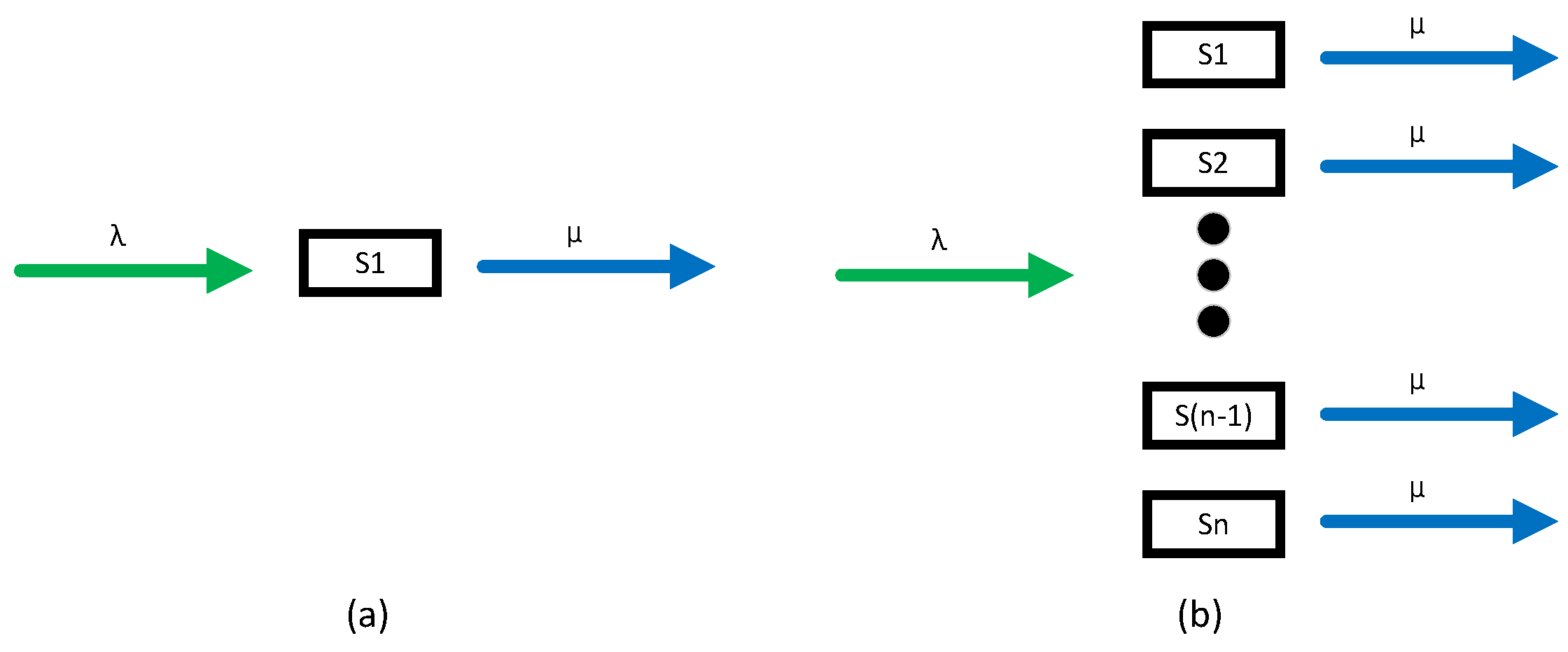





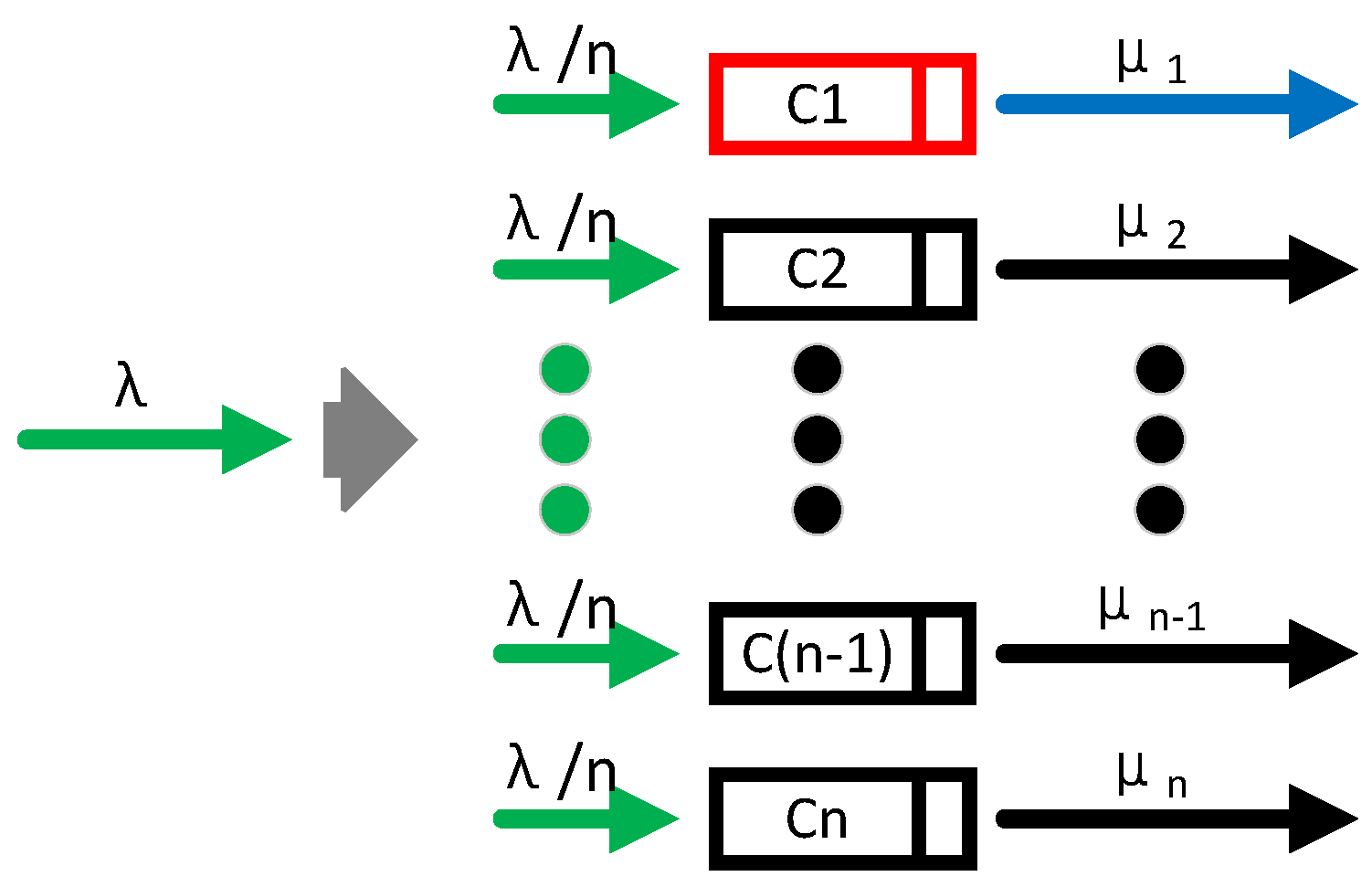

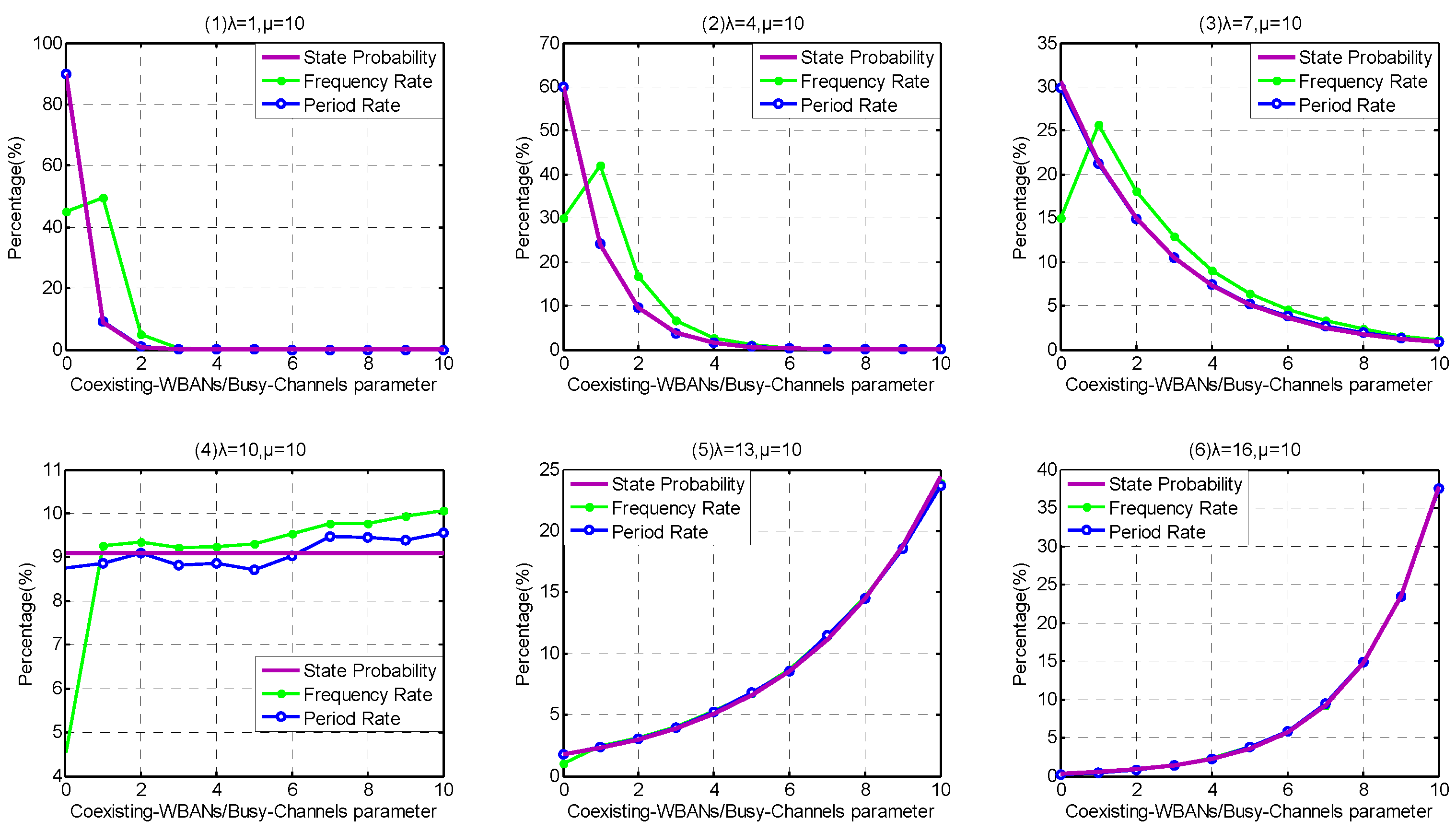
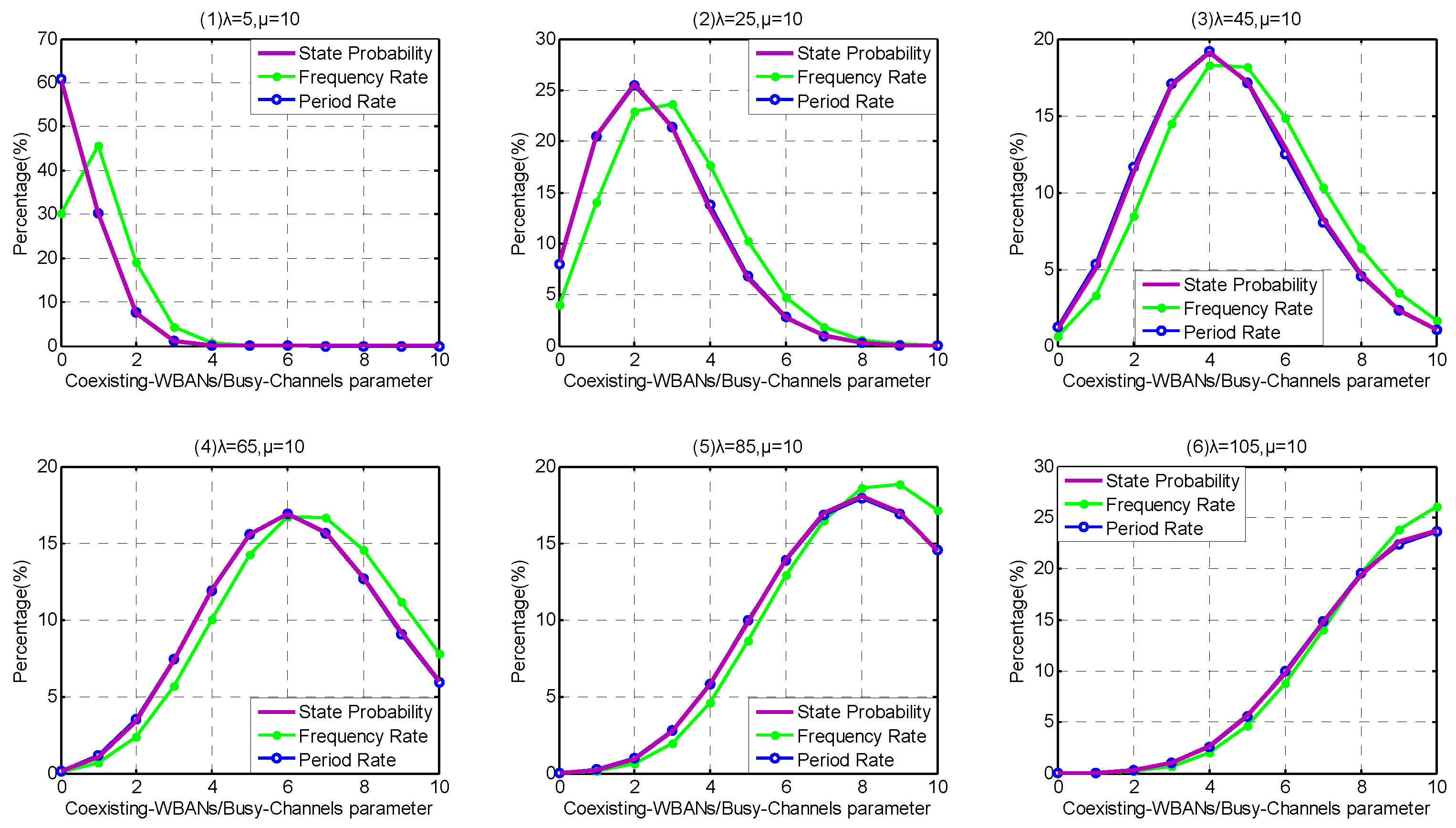
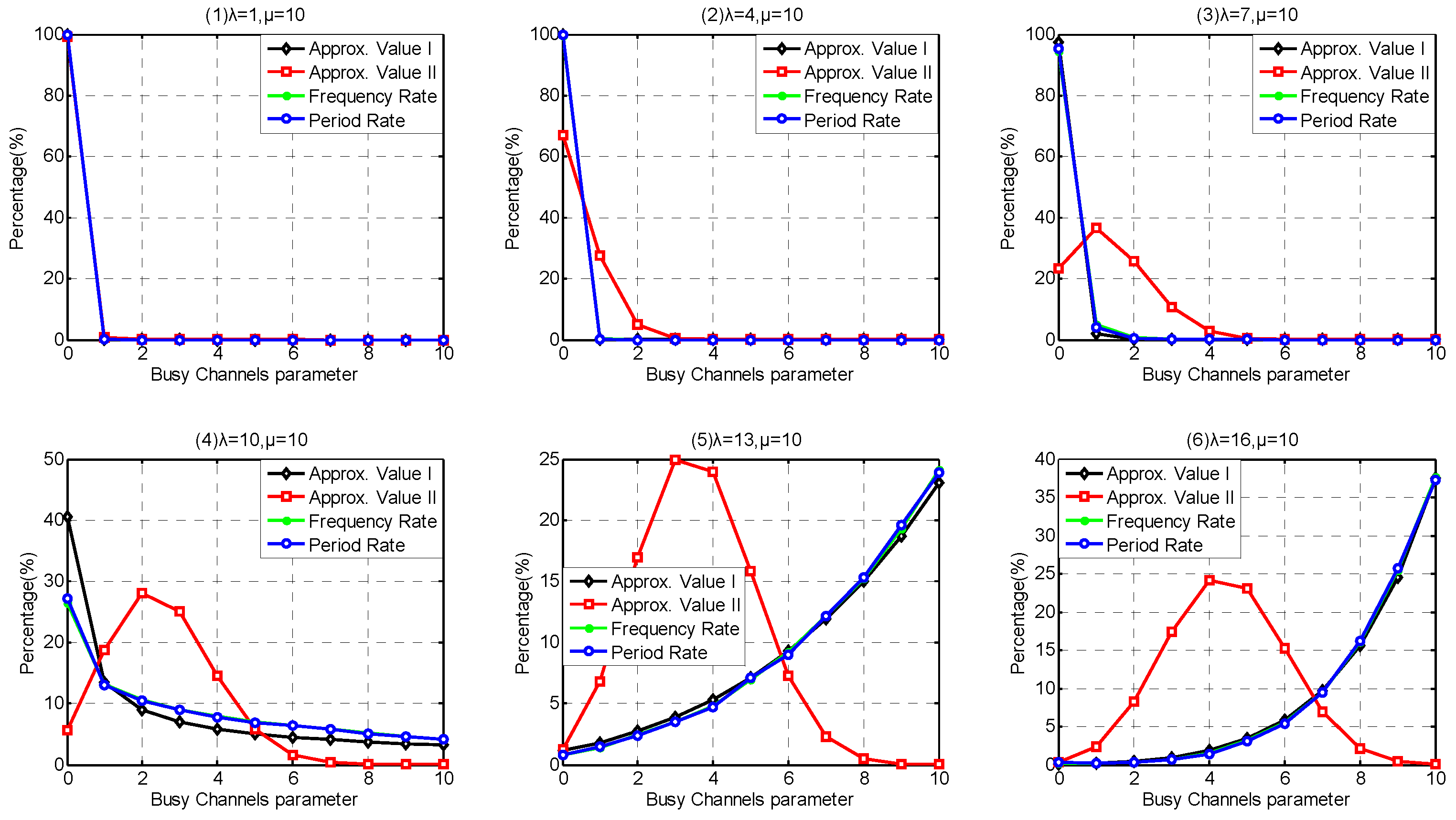

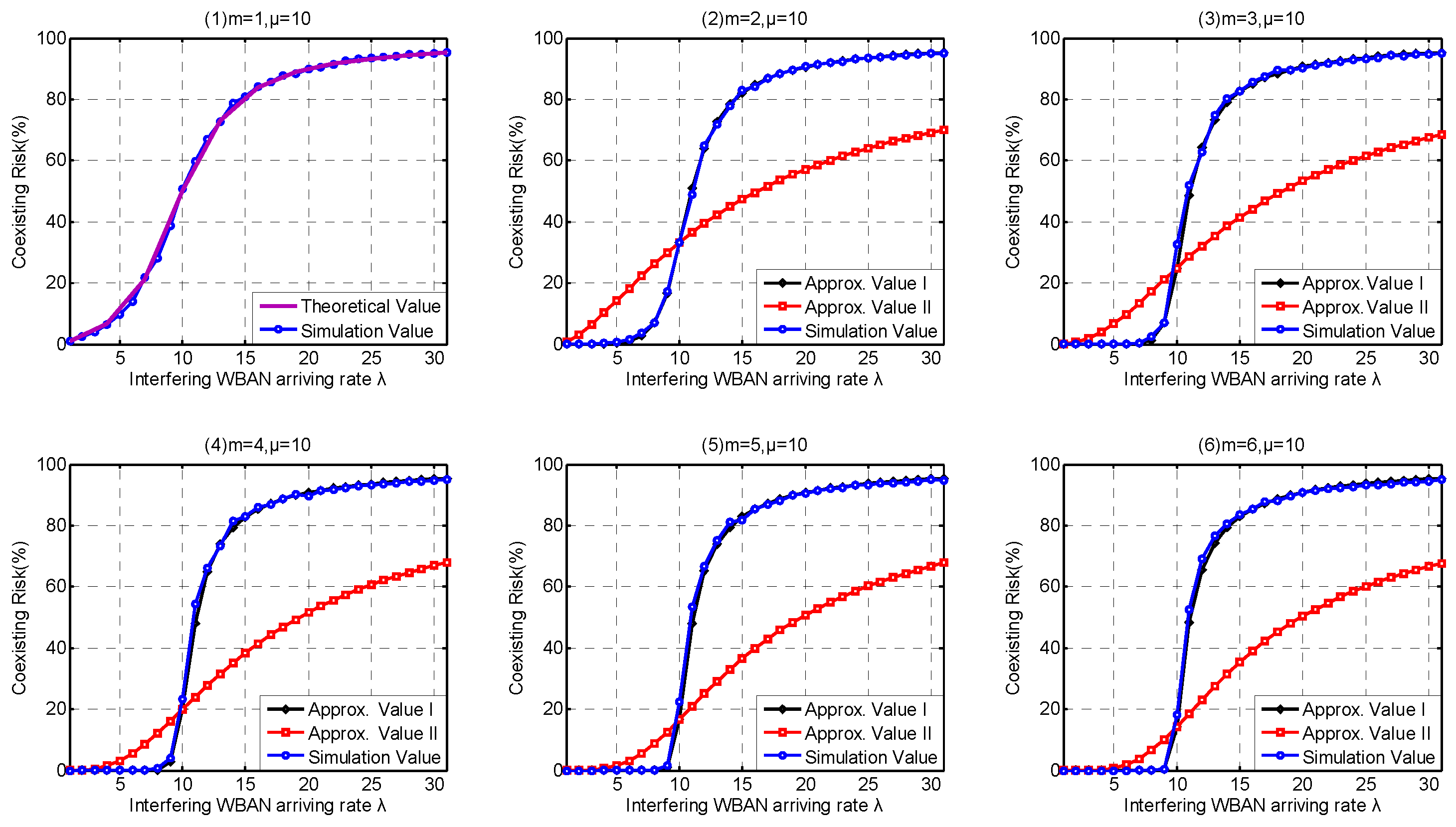
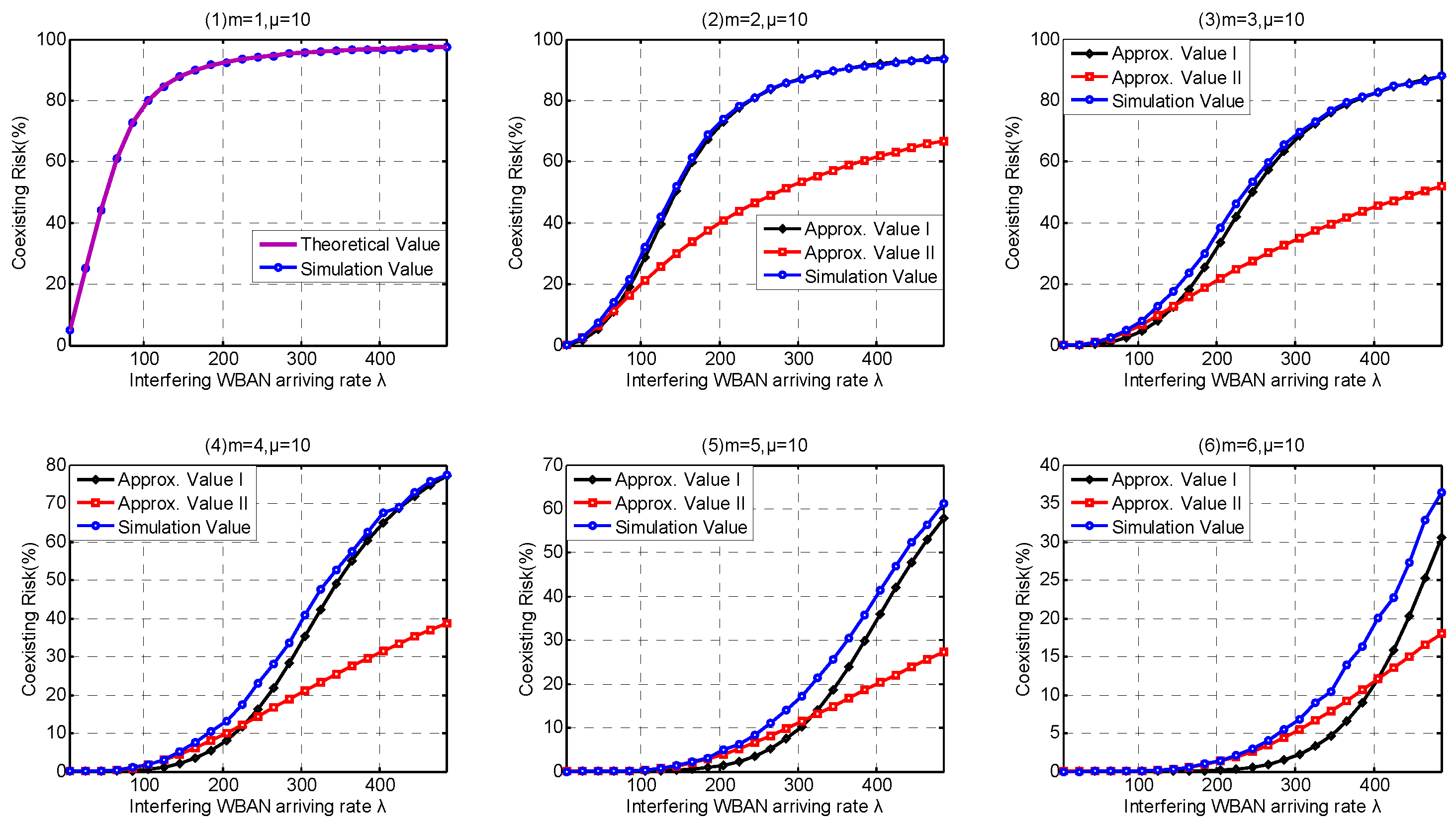
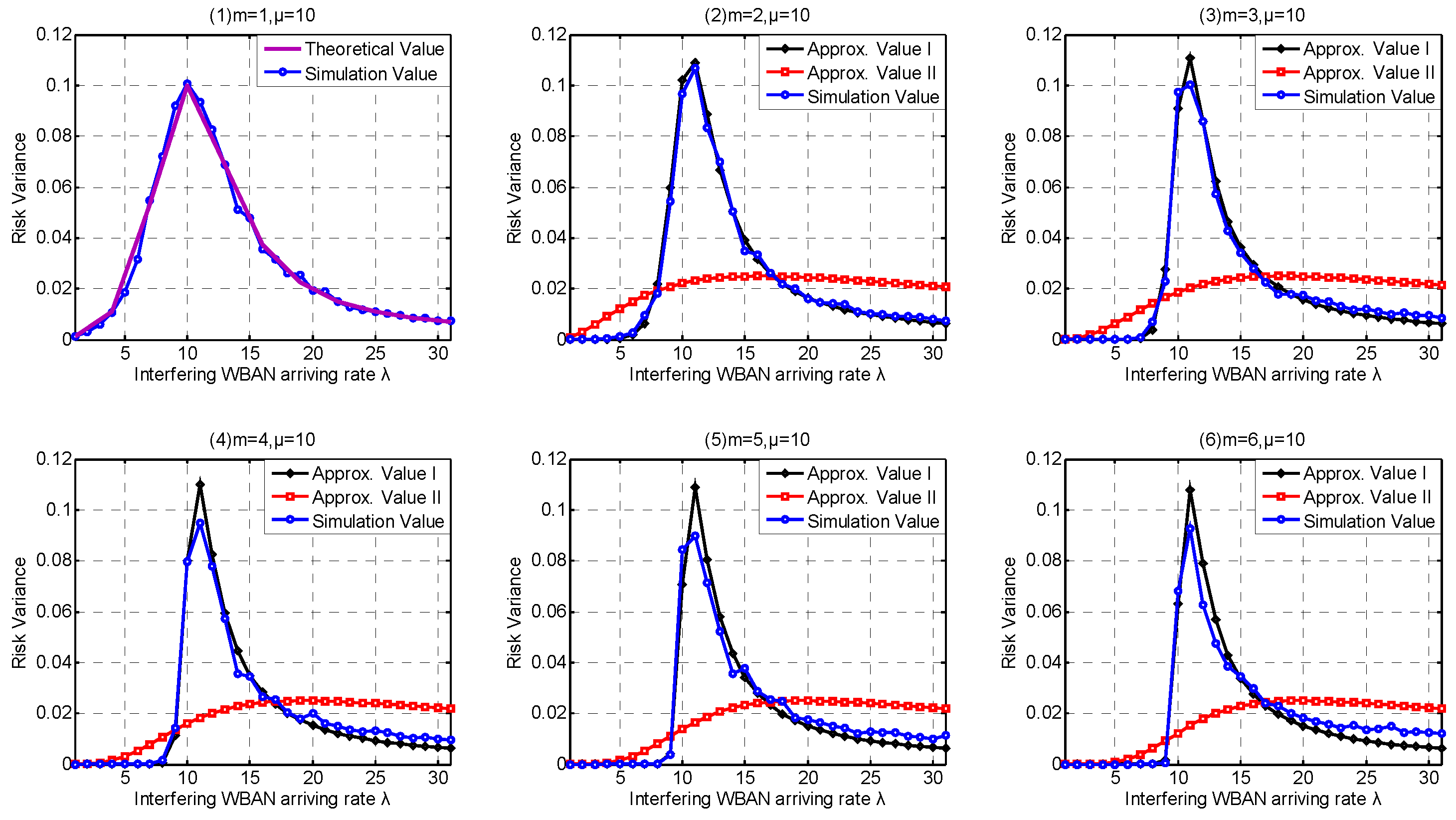
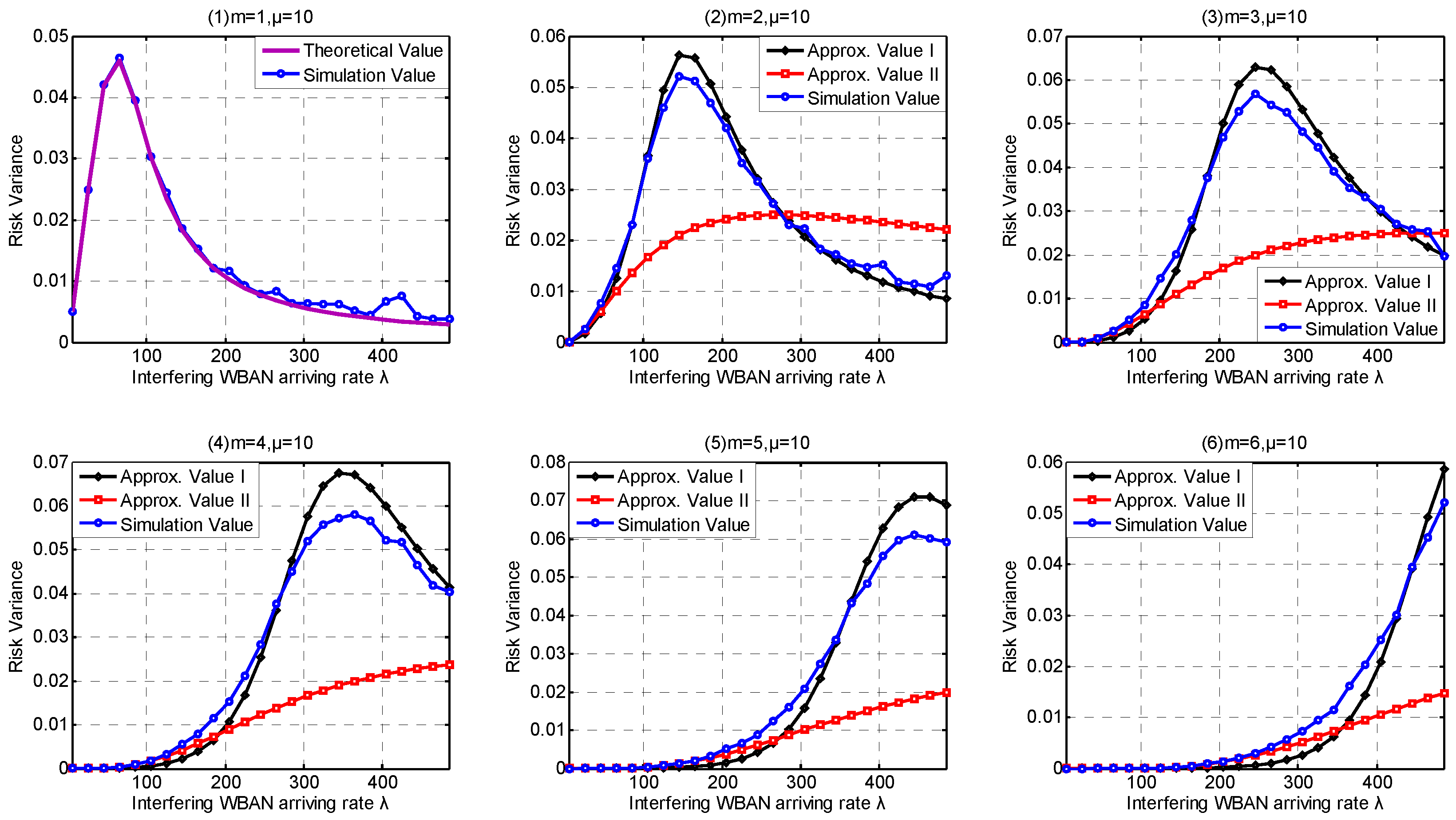
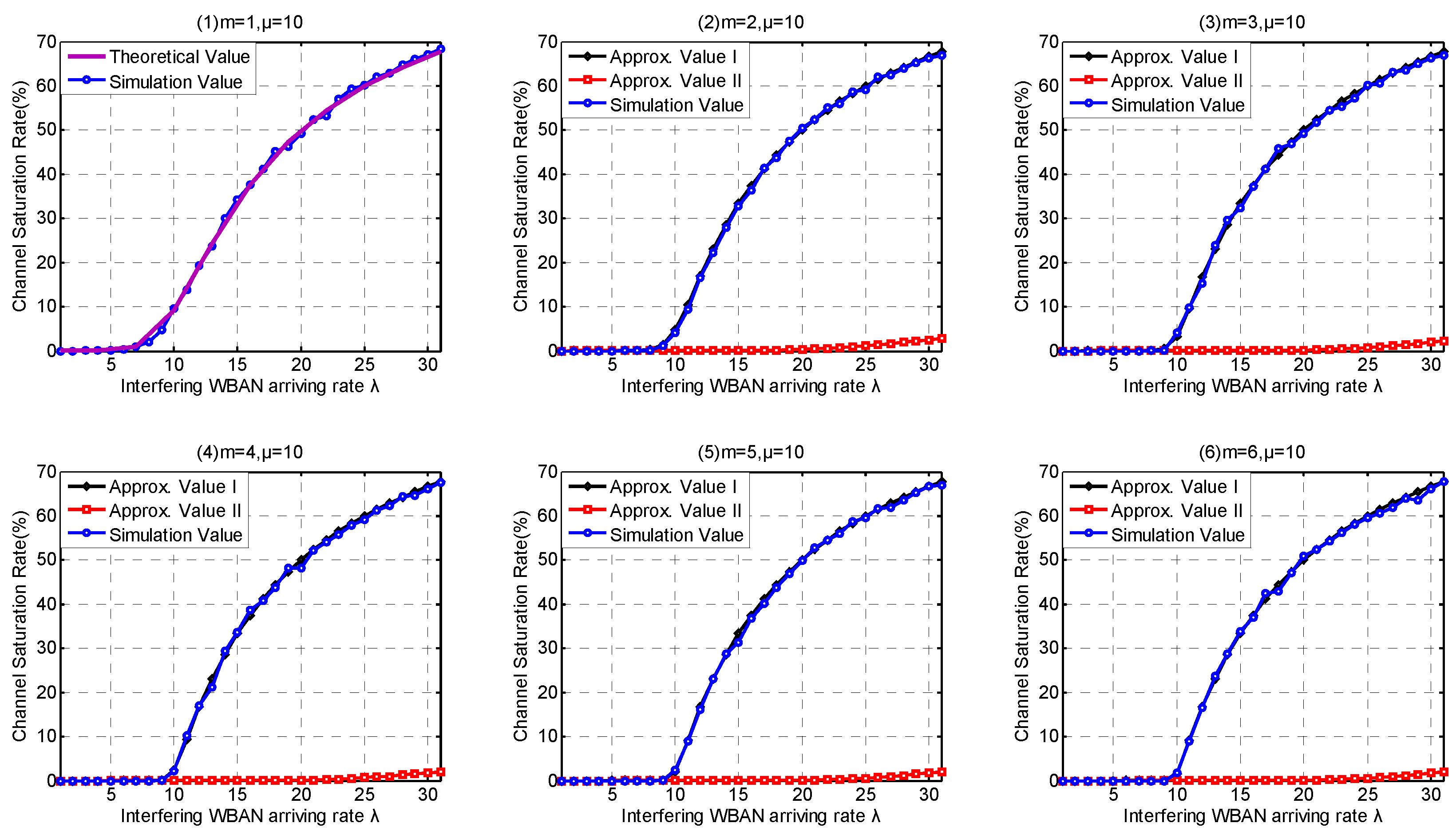
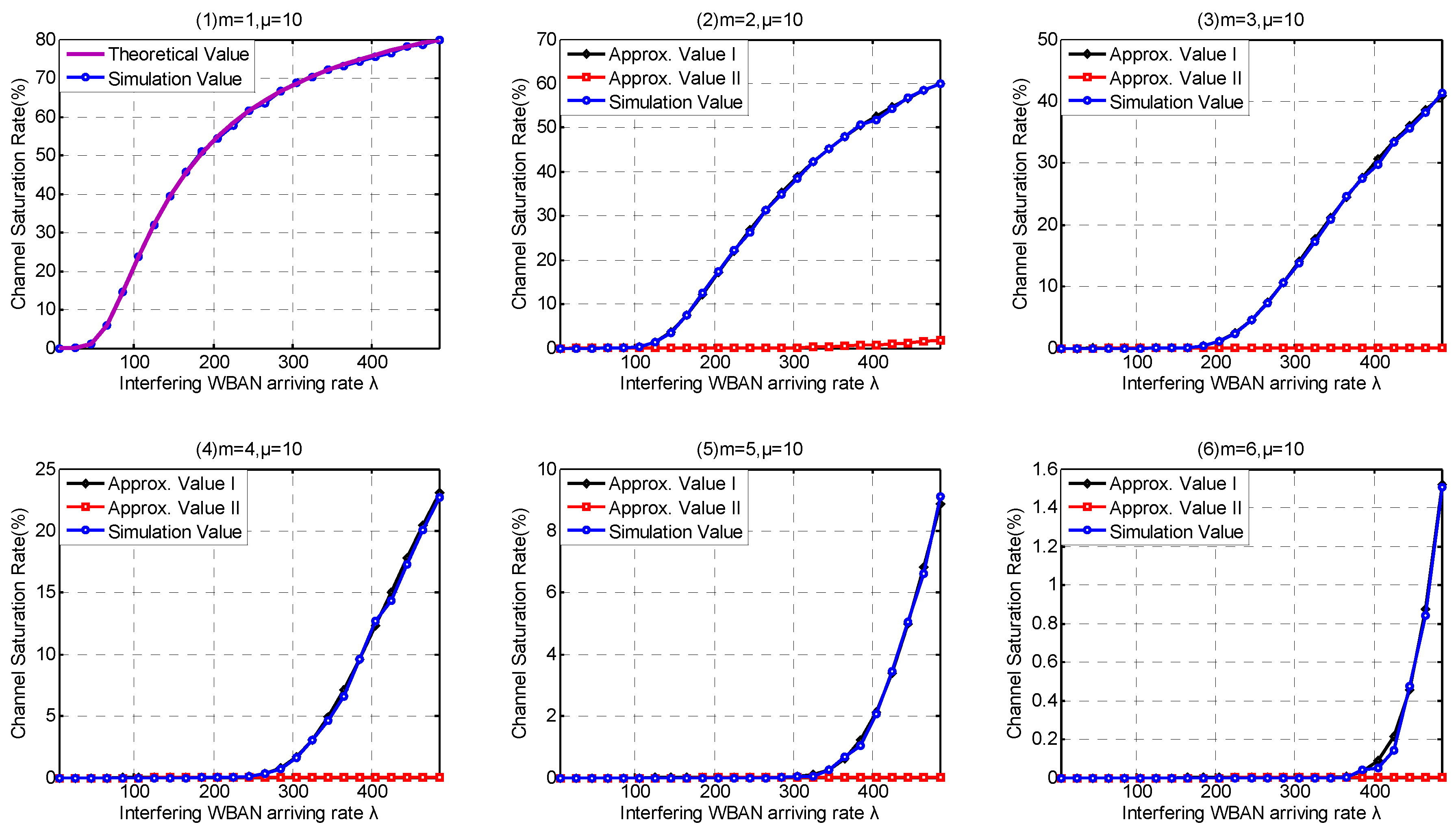
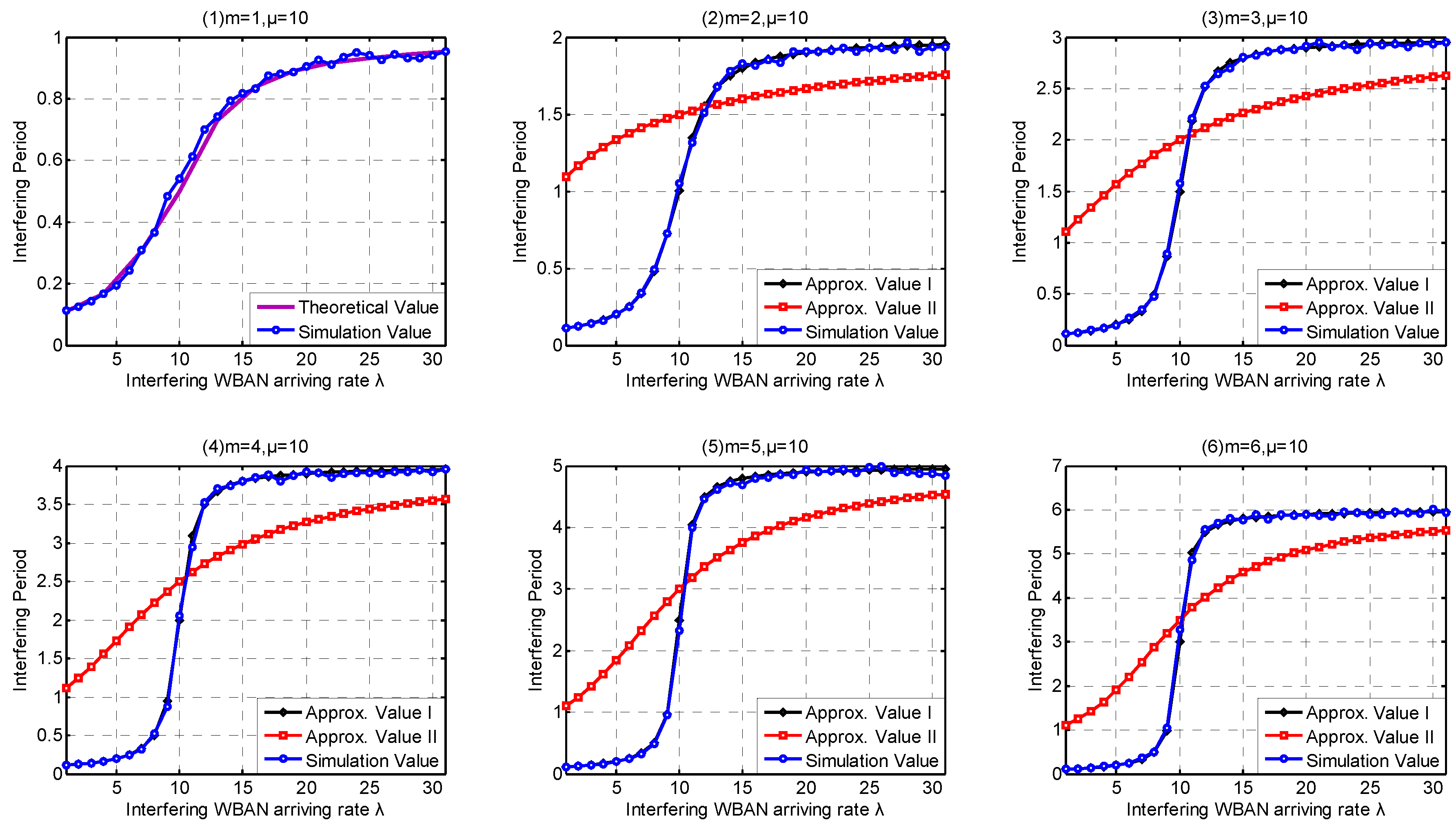
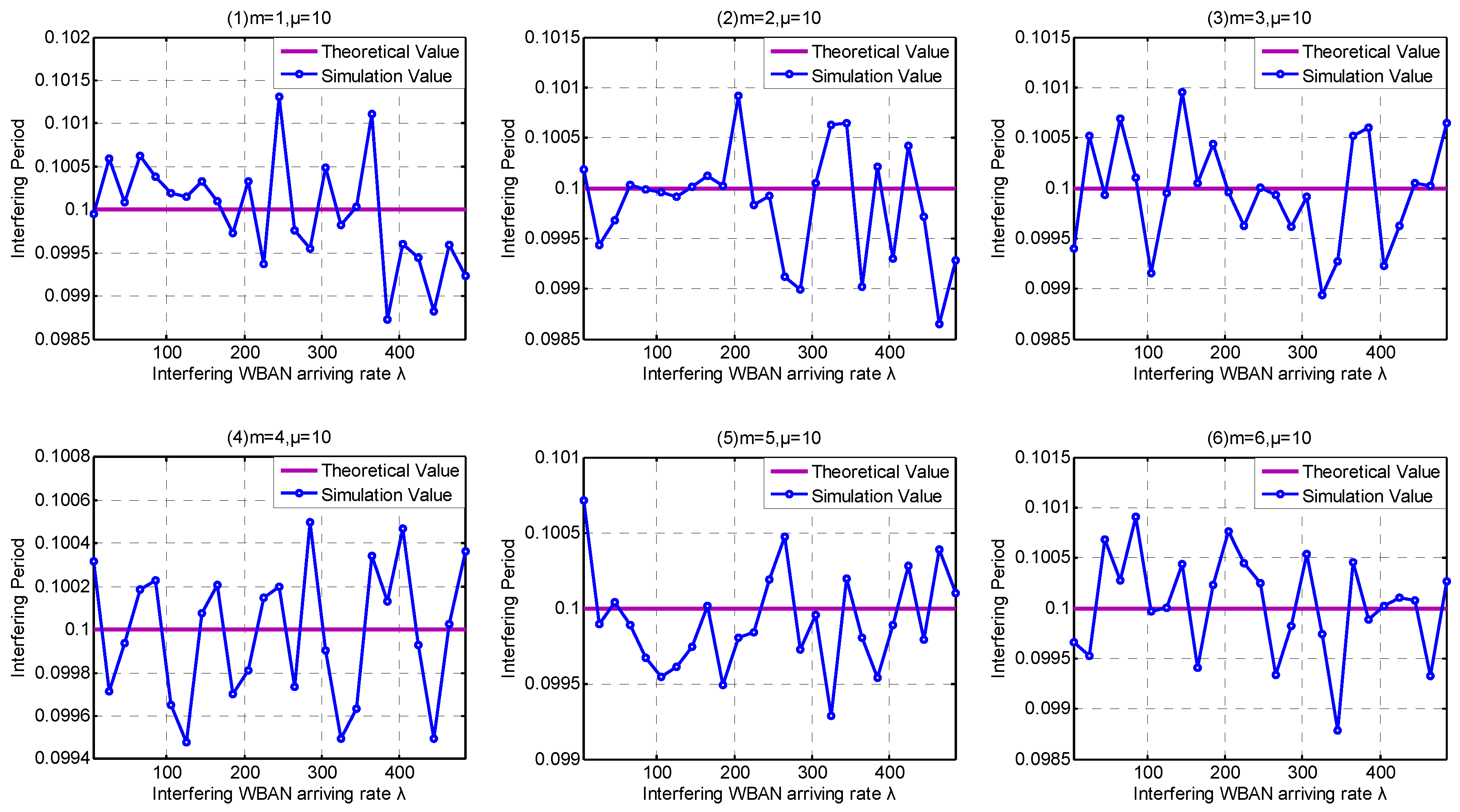


| Frequency Band (MHz) | Number of Channels (Nch) | Frequency Band (MHz) | Number of Channels (Nch) |
|---|---|---|---|
| 402 to 405 | 10 | 950 to 958 | 16 |
| 420 to 450 | 12 | 2360 to 2400 | 39 |
| 863 to 870 | 14 | 2400 to 2483.5 | 79 |
| 902 to 928 | 60 | – | – |
| Coexistence Mechanism | 10 to 50 MHz HBC/EFC | 402 to 405 MHz Band | 868 MHz Band | 902 to 928 MHz Band | 2.4 GHz ISM Band | 3.1 to 4.8 GHz and 6 to 10.6 GHz UWB Band |
|---|---|---|---|---|---|---|
| Beacon shifting | Not applicable | Not applicable given LBT restrictions | SD, D | SD, D | SD, D | D |
| Channel hopping | Not applicable | D | SD, D | SD, D | SD, D | S, SD, D for FM-UWB |
| Active superframe interleaving | S | None | None | S | S | S |
| Parameters | Values | Parameters | Values |
|---|---|---|---|
| λ | 2∼502 | Number of channels | 10 |
| μ | 10 | Coexistence capacity | , 2, , 4, 5, 6 |
| Simulation scale | 50,000 | – | – |
© 2017 by the authors; licensee MDPI, Basel, Switzerland. This article is an open access article distributed under the terms and conditions of the Creative Commons Attribution (CC-BY) license (http://creativecommons.org/licenses/by/4.0/).
Share and Cite
Wei, Z.; Sun, Y.; Ji, Y. A Study on Coexistence Capability Evaluations of the Enhanced Channel Hopping Mechanism in WBANs. Sensors 2017, 17, 151. https://doi.org/10.3390/s17010151
Wei Z, Sun Y, Ji Y. A Study on Coexistence Capability Evaluations of the Enhanced Channel Hopping Mechanism in WBANs. Sensors. 2017; 17(1):151. https://doi.org/10.3390/s17010151
Chicago/Turabian StyleWei, Zhongcheng, Yongmei Sun, and Yuefeng Ji. 2017. "A Study on Coexistence Capability Evaluations of the Enhanced Channel Hopping Mechanism in WBANs" Sensors 17, no. 1: 151. https://doi.org/10.3390/s17010151





